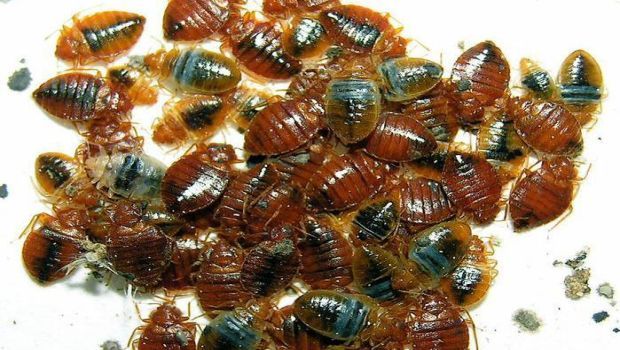Study Examines Bed Bug Infestations in Low-Income Apartments in New Jersey
In order to determine where bed bug outbreaks are occurring and the best way to prevent and control infestations, entomologists examined 2,372 apartments in New Jersey and looked at factors such as the age, race, and gender of the inhabitants. The results are published in the Journal of Medical Entomology.


These are bed bugs (Cimex lectlarius). Courtesy of Allen Szalanski, Bugwood.org (http://www.bugwood.org).
In order to determine where bed bug outbreaks are occurring and the best way to prevent and control infestations, entomologists examined 2,372 apartments in New Jersey and looked at factors such as the age, race, and gender of the inhabitants. The results are published in the Journal of Medical Entomology.
Dr. Changlu Wang and colleagues from Rutgers University examined 43 low-income apartment buildings and 2,372 individual apartments. They found that about 12 percent of apartments had bed bug infestations, although the rates of infestation varied from building to building.
They also learned that:
• Women were more likely to report symptoms of bed bug bites and more likely to express concern upon learning their homes were infested.
• Infestations were more prevalent in the homes of African Americans than in those of white or Hispanic residents.
• Fifty percent of residents with bed bug infestations were completely unaware of them.
• Apartment buildings with a high turnover of tenants had higher bed bug infestations.
Statistics like these are critical for controlling bed bug infestations, Wang explained, because "[they] can be used to target our education and bed bug prevention efforts to the most vulnerable communities."
The researchers also found that they were able to detect nearly 75 percent of infestations with brief visual inspections that took just 10 minutes or less per apartment, which would cost about $12 per apartment for labor based on a $50/hour labor rate.
Source: Entomological Society of America
Show, Tell, Teach: Elevating EVS Training Through Cognitive Science and Performance Coaching
April 25th 2025Training EVS workers for hygiene excellence demands more than manuals—it requires active engagement, motor skills coaching, and teach-back techniques to reduce HAIs and improve patient outcomes.
The Rise of Disposable Products in Health Care Cleaning and Linens
April 25th 2025Health care-associated infections are driving a shift toward disposable microfiber cloths, mop pads, and curtains—offering infection prevention, regulatory compliance, and operational efficiency in one-time-use solutions.
Vet IP Roundtable 2: Infection Control and Biosecurity Challenges in Veterinary Care
March 31st 2025Veterinary IPs highlight critical gaps in cleaning protocols, training, and biosecurity, stressing the urgent need for standardized, animal-specific infection prevention practices across diverse care settings.
Invisible, Indispensable: The Vital Role of AHRQ in Infection Prevention
March 25th 2025With health care systems under strain and infection preventionists being laid off nationwide, a little-known federal agency stands as a last line of defense against preventable patient harm. Yet the Agency for Healthcare Research and Quality (AHRQ) is now facing devastating cuts—threatening decades of progress in patient safety.